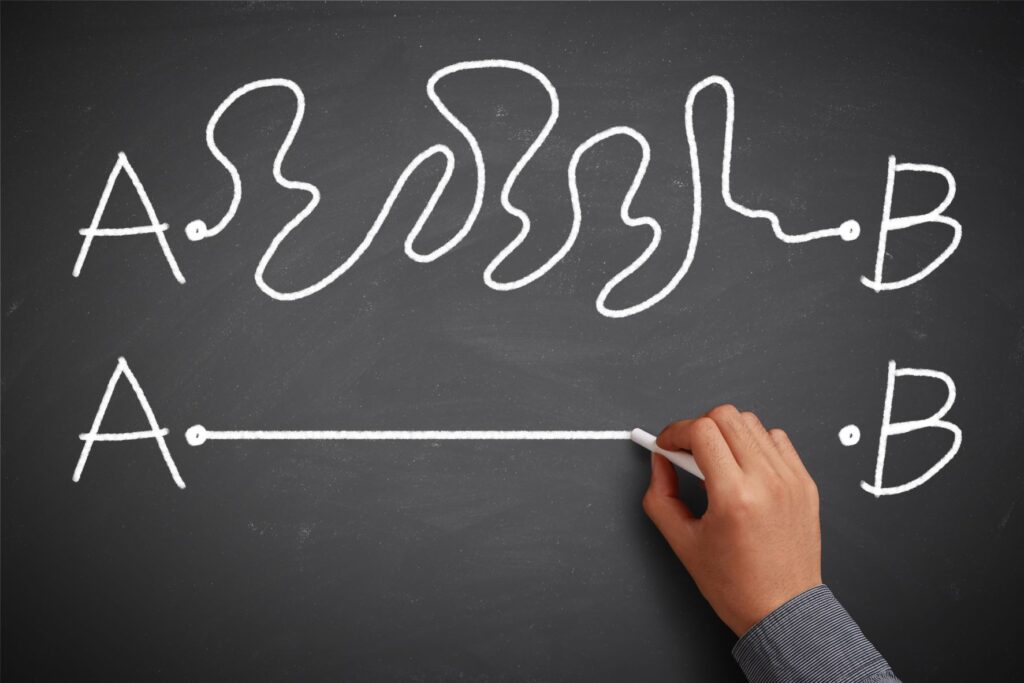
4 Bear Market Retirement Income Strategies
The 2022 bear market hits retirees the hardest
As we prepare to close out 2022, retirees and pre-retirees are facing the worst possible scenario, a triple bear market. US stocks, along with international stocks will likely be down double digits. US bonds will close in the red 10%+ year to date. And cash, although yields have risen, are experiencing negative returns net of inflation. All in all, the traditional 60/40 investment portfolio model for retirees has many questioning whether this strategy is still viable.
Many of you will need to take a distribution to satisfy your RMD (“Required Minimum Distribution”) for 2022 and 2023, or simply need income to live on during retirement.
But, you have probably heard the old saying, “Buy Low and Sell High.”
Well, how do you implement a retirement income strategy during a bear market, particularly one in which both stocks and bonds are experiencing record losses?
Here are 4 retirement income strategies to consider during times like these. Let’s not forget that bear markets, on average, happen every 5 years. So, in a potential 30 year retirement time horizon, you will experience roughly 6 bear markets!
Let’s dive in.
#1: Asset Dedication
One way to hedge bear market risk involves what is called the “Asset Dedication Strategy.” This strategy incorporates aligning a CD or individual bond ladder with specific cash flows, in this case retirement income. Let’s say your RMD is estimated to be $50,000 in 2023. A basic example would be to purchase a high quality bond or CD for $50,000 (or a combination), that will mature at the time the cash flow is needed. This is my personal favorite when working with clients because it eliminates the uncertainty of where interest rates might go in the future. In general, when interest rates rise (like in today’s market), the value of bonds go down. If you own an individual bond and hold it to maturity, the par value is redeemed in addition to the interest payments you received. Therefore, who cares what the price fluctuation was along the way?
The challenge for bond mutual funds or ETFs is they have to deal with redemptions (other investors selling), which will inevitably impact the price of that particular fund, and ultimately its performance.
Depending on your time horizon and risk tolerance, we would create a bond and/or CD ladder to satisfy 2-10 years of those expected distributions.
If done properly, you will never have to sell your stocks when markets are down. As your bonds mature and are paid to you as retirement income, you would then re-balance your portfolio (sell some of the winners) to add the next “rung to your ladder.”
The frequency of the re-balance will depend on market conditions and how well your other investments are performing. So, if markets rise rapidly, you might find yourself adding several rungs to the fixed income ladder by taking gains off the table. That way, when markets are down, you have plenty of wiggle room to wait until things recover.
If the strategy involves a taxable account (non-retirement), you might consider municipal bonds, depending on your tax rate. These interest payments are exempt from federal income taxes, and could also be exempt from state income taxes depending on the bond you purchase. If the strategy involves a tax free or tax deferred account, investing in corporate bonds and/or government issuers will work just fine, as taxes are not a concern.
BONUS Strategy
I have to add a bonus strategy as not all bond mutual funds and ETF’s have done poorly in 2022. In late 2021, with the help of our friends at Wisdom Tree Asset Management, we added the ticker AGZD as a core bond holding for all client accounts. The more conservative the account, the more exposure to AGZD. This strategy involves using traditional fixed income securities coupled with derivatives within the treasury market to hedge against interest rate increases.
Sound complicated? Well, it is somewhat. But in essence, when interest rates do rise (like in 2022), this strategy helps preserve principal unlike your traditional bond mutual fund or ETF.
Year to date this strategy has returned a positive return of 0.63%! Compare that to the average bond mutual fund at -12.79%, wow! This strategy, coupled with individual bonds, has allowed our clients to protect their retirement income during this particular bear market.
#2: “Income Flooring”

“Income Flooring” with annuities is another strategy that works extremely well during volatile markets. This involves purchasing an annuity to generate an income floor that can be relied upon regardless of market fluctuations. Social Security might represent a portion of your fixed income needs in retirement, but what makes up the gap? If you are relying solely on securities that have price fluctuations, what do you do in a market like 2022?
An income floor will invariably reduce the amount of cash needed from a distribution, and therefore will allow your riskier assets to recover during a downturn.
The beauty of this strategy in today’s market is that interest rates have risen sharply. Therefore, insurance companies have been able to increase their payout rates, thus making income flooring much more attractive than it was 3-4 years ago.
I like to compare this to purchasing an investment property designed to pay a fixed income stream. The difference is there are no repairs, unexpected maintenance costs, or tenant vacancy gaps.
On the flip side, it’s not an asset you can “sell back” to anyone to recoup your principal. Additionally, there is no price appreciation like you would expect from buying real estate.
For the most part, these annuities are not liquid and should not be relied upon for an unexpected expense or emergency fund. Therefore, I typically would not recommend exchanging a large majority of your investible assets for these contracts given the lack of flexibility.
However, if structured properly, it can serve as a compliment to Social Security and other guaranteed income streams.
A good rule of thumb is to calculate your non discretionary expenses, and compare that to your projected fixed income payments (Social Security and Pensions). If there is a shortfall, you might consider backing into how much money would need to be exchanged into an annuity to fill that gap.
If you have yet to claim Social Security, this strategy can be even more powerful so you avoid tapping into longer term investments for current fixed income needs.
Caution
These contracts are complex and not all annuities are created equal. It’s important to consult with a fiduciary financial advisor who can work with you and multiple insurance carriers to select the most appropriate product. Caring.com has a great article on annuities that you can read here.
#3: Cash Value Life Insurance
Cash Value Life Insurance is one of the highly debated products in the financial services industry. Insurance companies tend to “sell the sizzle” and often fall short on fully educating the consumer.
On the other hand, most investment advisors tend to default to the advice of “buy term and invest the difference.”
I started my career at a large insurance company, and now run my own fee only financial advisor firm, so I have sat at both sides of the table.
I wrote an article titled “5 reasons to own life insurance in retirement” that I would recommend reading to get my insights on the topic. For this article, I want to focus on using the cash value as an income strategy to hedge a bear market.
Here are the basics:
- Cash values within a fixed life insurance policy have a guaranteed interest rate + a non guaranteed interest rate. They are paid to the policy owner in the form of annual dividends that can be used to purchase more life insurance, increase the cash value (or both), and pay premiums.
- Cash values can be surrendered, at which point taxes will be due on any gains (if applicable)
- Cash values can also be borrowed tax free while also keeping the policy in force
Example: Let’s say you have a policy with $100k in cash value. You are also retired (or planning to retire) and need $50,000/year from your investment portfolio to supplement other income sources. In a market like 2022, you might find it difficult to take a distribution from your investment portfolio, unless you implemented strategy #1 or #2 as previously mentioned. Therefore, instead of selling a stock or bond at a loss, you might consider borrowing $50k from your $100k cash value on a tax free basis. The loan will be charged interest, but there is still interest credited to you on the loan. My personal policy with Northwestern Mutual has a net charge of 3%, which isn’t bad in today’s market.
Let’s say you borrowed from the policy and avoided selling your longer term investments. Now what?
You have two options.
One, you can let the loan ride, and simply ensure that the policy doesn’t run into issues down the road. This involves reviewing your policy on an annual basis using an “In Force Illustration.”
When you pass away, the loan proceeds will be subtracted from the death benefit paid to your beneficiaries.
Or two, pay the loan back once the market recovers.
I prefer option two if you plan to utilize this strategy again in the future. At some point, this market will recover, and we will set new market highs. Who knows if that will be in 2023, 2024, or even 2025. But at some point, you might experience substantial gains within your stock portfolio that you are comfortable with taking $50k off the table and paying back that policy loan.
In essence, you are using the cash value as a re-balancing tool in lieu of other fixed income assets.
Here’s the challenge.
You need to have the cash value in the policy to take advantage of the strategy in the first place. This involves buying life insurance and funding the policy adequately to build up adequate cash value.
Therefore, this strategy is best suited for those of you approaching retirement that have adequate recourses to fund a policy for at least 5 years, and you’re healthy enough to buy it. If it’s designed properly, this will give the policy time to work properly and set you up for this defensive hedge that you may need 4-5 times throughout an average retirement time horizon.
Caution
Much like annuity contracts, life insurance policies are also not created equal. The design of the policy is key and will impact the viability of policy loans as well as the tax implications of using the cash value.
Furthermore, this strategy works best if you have a legacy goal of transferring assets to the next generation, and the cash value is more of an ancillary benefit.
Consult with a fiduciary advisor and licensed agent to create an optimal strategy best suited for you!
#4: Tap into Home Equity

Leveraging a HELOC (Home Equity Line of Credit) or Reverse Mortgage to access home equity is my fourth and final strategy.
With home values shooting up the last few years, you might find yourself with a large chunk of cash available to tap into via a home equity line of credit or reverse mortgage. This should be done carefully as it involves leveraging one of your most important assets, your home. However, if done properly, it could create an infusion of cash while letting your longer term investments recover.
A reverse mortgage could be tapped into as a form of life income payments, a line of credit, or both. At death, the loan amount would be offset by the sale of the home. For a HELOC, the loan would generally need to be repaid within a specified term. With rates increasing, you might be hard-pressed to find a HELOC for less than 6.5%. However, some of you might already have a HELOC established at a lower rate and can tap into the funds cost effectively.
Also, the challenge with reverse mortgages is that a higher interest rate will result in a more expensive loan and thus a lower payment. However, if you are in a bind, it’s worth consulting with your financial advisor and mortgage specialist to see if it’s a viable option.
In Summary
2022 has brought unique challenges to retirees. However, a well thought out retirement income plan is critical to weather this storm, and future storms during a 20-30 year retirement time horizon.
If you have questions about your retirement income plan, or are wondering how this bear market has impacted your long term goals, feel free to book a 30 minute initial conversation with me by clicking on the Schedule Now button below.
Also, make sure to subscribe to our email newsletter below so you don’t miss out on any of our future insights!
Retirement planning = reduce stress and worry less!











